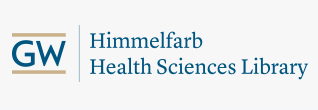The rate of progression in open-angle glaucoma estimated from cross-sectional prevalence of visual field damage in the Baltimore Eye Survey
Document Type
Journal Article
Publication Date
2-15-1996
Journal
Investigative Ophthalmology and Visual Science
Volume
37
Issue
3
Abstract
Purpose. To estimate the rate of progressive worsening in open-angle glaucoma. Methods. Visual field data from Goldmann perimetry in 151 glaucomatous persons from the Baltimore Eye Survey were graded on a 9 level severity scale. The scores were compared by regression analysis to other attributes (age, cup/disc ratio, treatment status, gender, and IOP) and the data were used to estimate the average rate of progressive field loss in glaucoma. Results. Among black glaucoma subjects, the severity of visual field damage was significantly associated with age (p<0.02), history of treatment (p <0.04), and IOP (p <0.0001). Using the relationship between age and damage, we estimated that the rate of deterioration of black glaucoma subjects was 2 grading levels per decade. For white glaucoma subjects, the inclusion of age in regression models significantly improved the prediction of damage score (p <0.01). The estimate of individual damage rate for whites was similar in magnitude to that in blacks. Conclusions. While glaucoma is a frequent cause of visual disability, its rate of progressive deterioration is not sufficient to lead to bilateral blindness in the lifetime of the majority of those affected. Confirmation of progression should be stressed in clinical glaucoma management.
APA Citation
Quigley, H., Tielsch, J., Katz, J., & Sommer, A. (1996). The rate of progression in open-angle glaucoma estimated from cross-sectional prevalence of visual field damage in the Baltimore Eye Survey. Investigative Ophthalmology and Visual Science, 37 (3). Retrieved from https://hsrc.himmelfarb.gwu.edu/sphhs_global_facpubs/1643

